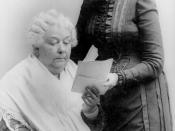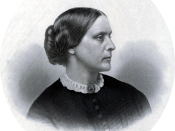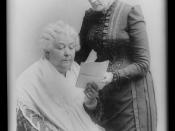Some leaders of the Early Women's Movement and their roles
One of the first and most important advocates of women's equality was the English author Mary Wollstonecraft, who wrote in the late 1700's. In the United States, other women's equality throughout the 1800's by working for the right to vote, own property, and obtain the same education as men.
Mary Wollstonecraft, a British author was best known for her book,
"A vindication of the rights of woman" (1792). This book was one of the first to claim that women should have equality with men. Mary believed said that men considered women morally and mentally inferior to themselves. She also would argue that women could live happy, creative lives if they had a better education.
The first American woman to publicly support higher Education for women would be Emma Willard. Her efforts advanced the movements in the United States. Emma started teaching school at the age of 16, she also established and ran a girls' boarding school in Vermont in the 1800's.
The school was later moved to New York. At the time it was known as the Troy Female Seminary, but later became famous as the Emma Willard School. Emma strongly supported public schools and she educated hundreds of teachers in her schools for girls.
An early leader of the women's rights movement is Elizabeth Cady Stanton. Elizabeth was also a graduated from Troy Female Seminary. Elizabeth and another reformer by the name of Lucretia Mott organized the first women's rights convention in the United States. So in 1848 in Seneca Falls, New York the first convention was held. Elizabeth and Lucretia wrote a Declaration of Sentiments, using the Declaration of Independence as their model. For example in the Declaration of Independence it states, "All men are created equal". But...



Good essay
very well written and researched
3 out of 3 people found this comment useful.